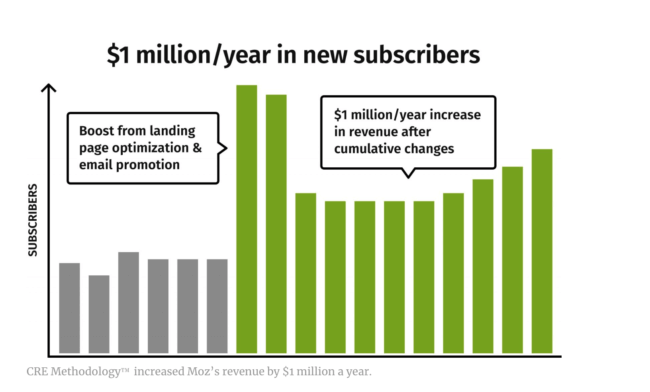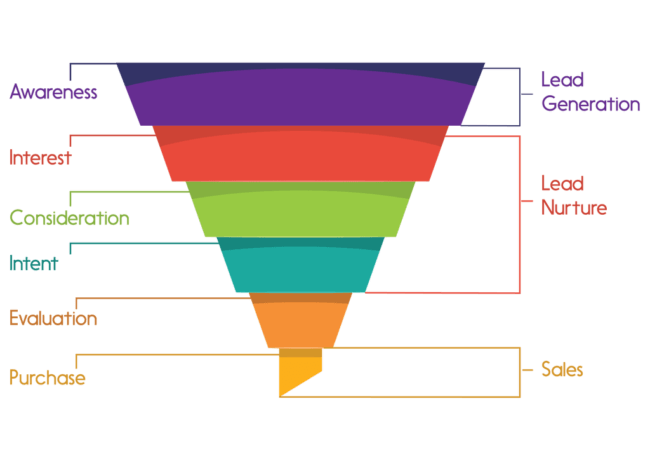Looking for a new digital agency that can help grow your brand quickly? Schedule a free marketing evaluation with our team to meet the right agencies fast. It’s fast, free, and we get it right.
Do you want to grow your brand? Most entrepreneurs and marketers would say that they do. While some are happy with where their business is–growth should be the ultimate goal for brands that want to stick around.

But growth is hard. There are always more things to do than can be done and figuring out what to put your time, money, and effort into can be the hardest part. As they say, the hardest part of anything is getting started.
Instead of giving platitudes, in this article, I am going to give you 12 actionable things you can do over the coming months to grow your business.
Notice I didn’t say “you can do it today”. Too many blog posts and articles online promise you quick results. The truth is that growing your brand is hard and it takes time as well as many missteps along the way.
Business growth also gets harder as your business grows bigger and there are more moving parts, so advice has to be context-specific to be really useful.
I will attempt to underscore in each strategy the stage in which it might be most effective.
These are the best ways I have learned and others have shared with me to grow your business.
Table of Contents
Grow website traffic
One of the best ways to grow your brand is to grow your website traffic by ranking better for the keywords in your industry that can drive you, new customers, answer your customer’s questions with resource content, and increase referrals from partners and other websites.
Increased traffic does not always mean increased business, as the traffic could be irrelevant to your business. But when you increase traffic with targeted and qualified visitors then your business will grow.
There are many ways to increase your website traffic:
- Through SEO and building out new content to target new keywords;
- Through retargeting and new advertising initiatives;
- Through referral partnerships from other companies who have a similar audience to your ideal audience.
SmartBlogger has a really good guide to increasing website traffic (which goes well with our Ways to drive traffic post) that talks through reverse engineering your competitor’s content, leaning on Quora to answer relevant posts and link back to your own resources you’ve created, and driving your content strategy based off data.
Canva saw a 226% increase in traffic over a three-month period by following this strategy:

Raise prices
The single best way to grow your business’s revenue is by raising your prices. At some point, you will hit a ceiling on pricing, but most brands and businesses do not yet have to worry about that.
The best strategy to raise your prices is to do it slowly, especially in a services business though this can apply to other businesses as well.
Your customer does not have to know that you charged another customer half as much. If the new customer is willing to pay the increased price, then you just doubled your revenue.
If they are not, then test it on a few more and figure out what you need to do in order for them to pay the new price.
When my friend Kark Sakas doubled his prices, he did so by:
- Updating his public-facing pricing first;
- Letting existing customers know that their price was locked in until the end of the year (5 months away) but that it would go up after that;
- Offered a pre-pay bonus (almost everyone said yes to this);
If you can’t demonstrate your value or your customers are unhappy, then you probably will not be able to do this as successfully as Karl. Focus on improving your customer happiness first, then increase your prices if you are under market rate and underpricing for the value you bring.
Fire low value and high maintenance customers
Low-value customers are high-maintenance customers, and high-maintenance customers are costly. If you fire these customers, then you clear up support time and focus on existing and new higher-value customers who will be happier and take less support time than the low-value customers.
Tim Ferriss of The Four-Hour Work Week writes about this in that book. He found that the majority of his customers made up a small amount of his revenue, but they took up 90% of the support time.
He fired all of them and doubled down on the happy customers who made up the majority of his revenue. By doing this, he was able to grow those customers by providing them with a better experience, and his business grew.
Not all customers are created equal.
Apply the 80/20 principle to time consumption: What 20% of people are consuming 80% of your time? Put high-maintenance, low-profit customers on auto-pilot–process orders but don’t pursue them or check up on them–and “fire” high-maintenance, high-profit customers by sending a memo detailing how a change in business model requires a few new policies: how often and how to communicate, standardized pricing and order process, etc.
Indicate that, for those clients whose needs are incompatible with these new policies, you are happy to introduce other providers. “But what if my largest customer consumes all of my time?”
Recognize that 1) without time, you cannot scale your company (and, oftentimes, life) beyond that customer, and 2) people, even good people, will unknowingly abuse your time to the extent that you let them. Set good rules for all involved to minimize back-and-forth and meaningless communication.
Reduce unnecessary expenses
Every business should understand where their revenue is coming from and what they are spending that revenue on. While people will often be your highest expense, online businesses especially have optional costs that we spend on in order to grow.
If you want to make your business more profitable or have more money to invest into channels that are returning a profit for you, do a deep dive with your bookkeeper (we use Gusto at Credo) or accountant and see where your spending is going.
Then, make decisions about what you can cut and what you can reallocate to get a better return and grow even faster.
Outsource low-value tasks
Employees often get into the hamster wheel of working on low-value efforts that are better handled by outsourced or cheaper labor. Low-value tasks take as much time as high-value tasks, so give yourself or your employees the time back to focus on the tasks that matter to your business.
To do this, use a spreadsheet and note down everything you are doing every half hour, for an entire week. Then, ascribe an effort and value number to this and from there come up with a monetary value for a task.
Tasks will fall into a few buckets:
- You (or your employee) love doing them and it is valuable. The employee should keep doing it.
- You (or your employee) are good at it and it is valuable. The employee should keep doing it, but should not be their whole job.
- You (or your employee) are not good at it and it is valuable. Find someone else to do it.
- You (or your employee) are not good at it, it is not valuable, and it is optional. Stop doing it.
You will likely discover that you are spending 6+ hours a week on tasks in the bottom two. Seek to minimize these so you can spend more time on the top two.
This was a turning point in my business.
By hiring an assistant, I could literally make every hour more profitable by working on high-value activities while other activities that I hated or was no good at were taken care of by someone else:

Reduce customer churn
If your customers are leaving your product or service, then you have to do more work to get new customers just to maintain a steady business. If your churn gets too high then it becomes almost impossible to maintain a growing or steady business, and this leads to a shrinking business.
If you can reduce your customer and more importantly revenue churn percentages, then your business will grow faster because you can spend less time replacing revenue and more time acquiring new customers and revenue.
One example is helpdesk software Groove, which you may know from their founder blog and journey to 500,000 visitors.
In a case study from ConversionXL, we learn that they reduced their churn by 71% by defining the why behind their customers quitting. Their 4.5% churn rate was unsustainable, so they studied behaviors and found that customers who churned spent markedly less time in the product and interacting with the product within their first 30 days.
Read more: How to Reduce Customer Churn
Hire a great team
If you want to go fast then go alone, but if you want to go far then you have to go together.
Hiring a team to work on marketing channels or areas of the business that are currently underserved because of lack of time is often one of the best ways to grow a business.
When the revenue supports it, hiring a team (or using freelancers/consultants/agencies) to increase the velocity and quality of work being done lets you do more and thus grow faster.
Increase customer value
Data shows that you spend more to acquire a new customer than to make more from your existing customers. You will likely also find that when you try to make more from your customers, you add features and services that make them happier as well thus reducing your support costs and customer churn.
Increasing customer value can be complicated and overlaps with many of the other points in this post. It is most commonly accomplished through some combination of the following:
- Raising prices
- Expanding product offerings
- Adding services
One company that increased its customer value which led to a large increase in revenue and drove new customer acquisition was Super Hair Pieces, as mentioned in this case study by BigCommerce.
By implementing a rewards program and offering discounts for increased buying, Super Hair Pieces was able to increase customer value by leaning on the reality that 67% of consumers modify the brands/companies they purchase from in order to maximize points.
Expand product line
At some point, you will hopefully reach the point where you have saturated your audience and your potential clients/customers. Growing now becomes much harder because you must either educate new people to care about and ultimately buy what you are selling, or you need to start stealing customers from competitors (if you can).
Another way to think about getting over this hump is to expand the products and services you are offering, either by moving into new areas/verticals or expanding the range of products you offer. Going upmarket or downmarket can lead to increased revenue and an expanded customer base that you can then maintain and grow.
One company that did this to great effect is Shopify. Their main Shopify business is a self-serve ecommerce business platform that runs on subscription. They realized that they had many merchants who were looking to leave Shopify because their needs had grown and changed substantially, so they created Shopify Plus to serve these larger customers.
Improve conversion rates
If you’re an acquisition marketer and able to build an audience, you don’t need to learn how to drive a bigger audience to your business. What you might need to do instead is focus on improving your conversions. This applies both to B2C (think an ecommerce store) and B2B (think marketing services), as improving your conversions from visitor > marketing qualified lead > sales qualified lead or visitor > paying customer directly grows your business.
Conversion rates can be difficult to improve, and as a business owner or operator, or head of marketing you must balance it against acquiring new visitors to your website to convert at current rates.
Conversion optimization works best when you have a good base of growing traffic and can dedicate efforts to converting more of those visitors to customers.
One company that saw great improvements in their business because of conversion optimization is Moz, who worked with Conversion Rate Experts (case study here) to improve their homepage. This led to an additional million dollars in revenue and a 51% lift in conversions.

Some companies have also seen an even greater lift. Conversion optimization, when done correctly for the right company in the right stage, can show huge dividends.
Elongate the marketing funnel
The marketing funnel is complicated. When you’re just beginning, you should be laser-focused on acquiring the visitors and customers who are looking in the current moment for what you are selling. This audience will get you through initial traction and give you (hopefully) a base of revenue off of which to build.

After a few years, this audience begins to be saturated by your marketing messaging. At this point, you need to find new areas of growth which often means concentrating on a new area of the funnel, often going higher in it to create content that targets people higher in the decision cycle and then educating them as they come down the funnel ultimately to the point of decision.
I wrote about elongating the conversion funnel on Credo by shifting our sales process to make it more high-touch which led us to go from about $4k/mo in revenue to over $15k/mo in revenue in eight months.
Expand revenue lines
Finally, expanding your revenue lines can help you grow your business by offering new services or layering on passive income streams (like affiliate marketing). The goal here is not to create more work for yourself, but to create additional income that either feeds business profitability or can be reinvested into other areas that can grow the business better and faster than you could have without that initial capital.
If you’ve bootstrapped a company before, then you know that sometimes you can use service revenue to fund development costs.
One great example of this is Brian Casel of Productize and Scale, who went on the Double Your Freelancing podcast to talk about this very thing. He talked about working for corporate clients, which burned him out and made him want to start offering productized services and products.
He used his consulting revenue to get a few products off the ground, which turned into productized service companies which he then used to go on and start other productized services.
By having a source of funding (eg consulting, though angel investing can be a great start as well), you can then expand revenue lines and products/services to grow your company even more.
Time to start really growing your brand? Find your all-star digital agency today. It’s fast, free, and we get it right.

